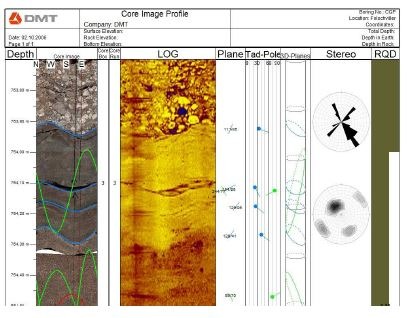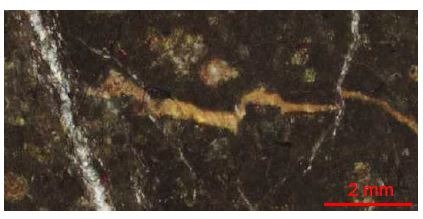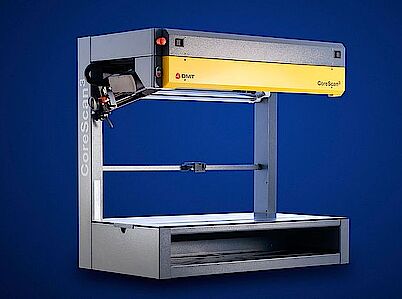The geological information that supports activities such as mining is largely the result of drilling techniques. Thus, the drill cores obtained, i.e., the rock samples collected during the boreholes, constitute the main source of information for direct subsurface research of a mineral deposit, providing samples that promote geological knowledge in greater detail.
In order to optimize projects based on core analysis, DMT CoreScan was developed. This equipment allows the acquisition of high-resolution images of drill cores, complete or fragmented, and their digital storage in color.
The use of this technology makes it possible to capture high-resolution images of up to 1016 dpi or 40 pixels per millimeter. In this sense, flat images of the cores can be generated, as well as in 360° visualization mode. The information is then read into the CoreBase software. Below, you can check out a video that illustrates how the CoreScan DMT works.
Sorry, this video can not be played because of your privacy setting.
You can change your settings here anytime.
Flat or 360° scanning
The CoreScan DMT generates images of the cores in two ways: flat or 360°. In the first mode, an entire testimonial box can be scanned, resulting in a detailed image of the cores. In the second mode, when the complete scan is done, the cores rotate 360° around their axis, while a fixed camera parallel to the axis of rotation performs the scan.
Both systems feature fast scanning technology:
- 360° mode: 20 seconds per meter;
- Flat mode: 30 seconds per case;
Images that exemplify these two modes can be seen below.








Software CoreBase
Information acquired through the DMT CoreScan can be processed in the Corebase software. Thus, the user has the functionality to create a digital library with integrated and organized data from the core cores with advanced search functions.
In this sense, the software's integrated database allows the structural and petrographic analysis of the drill cores, the generation of lithological columns, the definition of change zones and geotechnical parameters (RQD, FD, FS), and the rapid construction of hole logs. In addition, Corebase can be accessed online.




Applications
There are several applications of DMT CoreScan in a project and, among them, we can highlight its use in oil and gas exploration. This is because, through the UV CoreScan, it is possible to analyze the distribution of mineral oil or fluorescent minerals, such as scheelite. Other applications are:
- Sedimentological investigations;
- Structural investigations;
- Scientific drilling projects;
- Underground research for geotechnical studies, geothermal energy projects, final disposal of radioactive waste, etc.;
Advantages
One of the great advantages of DMT CoreScan is the high-resolution images, as mentioned earlier. In the following figure, it is possible to observe the image quality of a core generated by this equipment.




Another benefit presented is the portability of CoreScan. Instead of transporting the samples, the scanning can be done at the geological exploration site itself.
Check out the list of other advantages, available on the DMT Group website:
- Easy to move and user-friendly system;
- Quantitative analysis of fractures;
- Structural analysis of borehole cores and stereographic projection;
- The information is organized digitally with special software and archived for later use;
- Witnessing orientation;
- The data is permanently accessible and available online;
- Additional function for recording under ultraviolet light;
- The system can be purchased in full with product training or DMT Group experts can carry out the work on site.
To learn more about this and other technologies, follow the news on our social networks and stay on top of our blog!
References:
Core Scanning & Geophysical Logging at High-tech Quality Level. DMT.
Reliable results through high-resolution images: CoreScan 3. DMT.
DMT CoreScan – High-tech core logging. Saga Consultoria, 2019.
